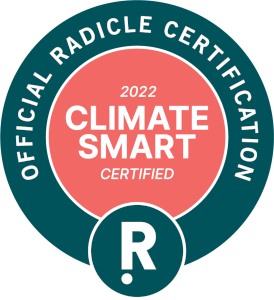Did you know that email is the most popular activity on smartphones or that 53% of people open email on their mobile phones?
Over the past few years, email marketing has seen a huge renaissance. E marketing isn’t as sexy as social media but it is a workhorse and when it comes to conversions it blows social media out of the water.
If you craft your email strategy and build your campaigns the right way, then they can offer a return on your investment (in both time and money) of up top 44% for every dollar spent – according to Campaign Monitor.
Hands Up, Who Has an Email Account?
The answer is everyone. Email is effective because of it’s wide reach – 2.3 billion people have email addresses and many (like me) have more than one (there are over 4 billion email accounts).
For most people email is the thing they check in bed before they go to sleep, and first thing in the morning when they’re having their coffee (or on the loo!). It is versatile for all business types and it has a low barrier to entry since it is so easy to set up. Even better – when it comes to your campaigns and lists you are in full control (as long as you stay CASL compliant).
You Need An Email Marketing Plan
Crafting an email marketing plan that takes into consideration your target customers and resources is key. It should set out your business goals, map your email goals to your business goals, and outline the steps you will take to achieve them. Doing so makes it easier for you to stay on track and makes a successful campaign much more achievable.
Here’s What to Include in your E Marketing Plan:
- Goals (Strategic, Campaign and Overall Email Marketing) – make them quantifiable i.e. $ sales, % increase in website traffic, number of leads of hope will result.
- Audience – identify who will receive your campaign (more on defining your audience below).
- Research – sign up for third-party newsletters to get ideas.
- Tools – determine which email marketing tool is best given what you want to achieve.
- Design – what will your email template(s) look like? Note that it should be about 500-600 pixels wide and vertical in design.
- An outline of content: topics, subject, images and links.
- Lists – identify where your lists reside i.e. in Excel, your CRM or….). First name and email addresses of subscribers in CSAV format will help you upload them to your email marketing tool.
- Timelines / Responsibilities and Schedule – who is responsible for what and when (this includes writing content, sourcing images, laying out the campaign, proofreading, approval, send and monitoring).
- Compliance – are you following the rule of law when it comes to sending email? Learn more about the Canadian Anti Spam Legislation in our blog post
- Testing – determine how you will test your campaigns before they go out to make sure they work on all devices
- Tracking – outline the tools you will use and how you will monitor the effectiveness of your campaign
Check out these email marketing plan examples from Constant Contact (this one is more of a content calendar than a plan) and Hubspot.
Four Tips for Email Campaign Success
1. Define your audience – determine whether you will you send it to current customers, past customers, new projects, suppliers and partners, or by geographic area, age, gender or job role. Hint – segmentation will increase your conversion rate.
2. Create great content starting with a content list:
- Determine what content will be included and outline general content types
- Identify who is going to write it
- Determine whether to recycle content you’ve already created or create new content (bear in mind that content should be useful and add value)
- Get creative – if you have a popular Tweet – expand on that
- Add great images to the mix
3. Outline Timing – the frequency of your email blasts will depend on your target audience, products/services and the resources you have. It’s better to send fewer higher quality email campaigns than try to send too many. If you get a great response and have the time resources to do so, then increase frequency
4. Scheduling – Work back at least a month from your intended send date to give you enough time to get this right.
Week 1 – Editorial basics – develop content topics, graphics, ideas, and define your audience then start tracking down your lists. If you don’t have an email tool set up this is the time to do so then create your template (most email marketing tools have templates you can adapt or you can have your developer custom code one for you).
Week 2 – Write, refine and expand on what you want to say, source images and/or photos, and define subject lines (here’s a handy tool to test their effectiveness).
Week 3 – Log in to your email marketing tool, create your campaign and add your content. Send a test campaign.
Week 4 – Get feedback, refine and improve your campaign. Send your campaign (Wednesday or Thursday morning is a good time if your audience is corporate, if it’s consumer then evenings, weekends or earlier in the morning will be best).
Week 5 – Track responses and measure success based on the goals you set at the start.
Week 6 – Start over!
If you need help or support with your email campaigns, please reach out. We’d love to work with you!




